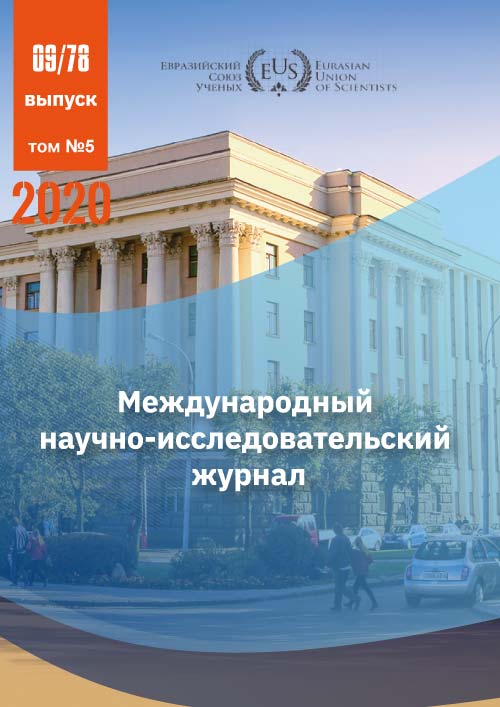THE USE OF BIOPREPARATION FOR ARTIFICIAL MYCORHIZATION SEEDLINGS OF FOREST TREE SPECIES IN NORTH – EASTERN KAZAKHSTAN
Аннотация
В статье представлены результаты проведенных исследований по применению искусственной микоризации сеянцев лесных древесных пород. Целью работы является изучение микотрофность pinus sylvestris L. и betula pendula Roth. in лесные экосистемы Северо-Восточного Казахстана и микоризация сеянцев в условиях открытого грунта. Опыты были проведены на 1160 сеянцах betula pendula Roth.и 1000 саженцев pinus sylvestris L. В условиях открытого грунта в Шалдайском филиале ГЛПР Ертіс орманы Павлодарской области. У опытных сеянцев приживаемость в 2019 году составила 83,3% для betula pendula Roth., 55,2% для pinus sylvestris L., в 2020 году она составила 81,4% для betula pendula Roth., и 53,3% для pinus sylvestris L.
Необходимость изучения микоризообразования у сеянцев хвойных пород в лесных питомниках Казахстана обусловлена как способ повышения качества посадочного материала
Литература
2 Smith S.E., Read D.J. Mycorrhizal symbiosis. – London: Academic Press, 2008. – 678 p.
3 Agerer R. Colour Atlas of ectomycorrhizae: With Glossary. - Einhorn-Verlag, Schwabisch, Germany, 1988. - 341 p.
4 Polenov A. B. Mushrooms. Edible and inedible: The most complete and up-to-date determinant Atlas. - Ed. AST "polygon", - 2013. -162 p.
5 Shubin V. I. Macromycetes of forest phytocenoses of the taiga zone and their use. - L.: Nauka, 1990. - 197 p.
6 Frank B. On the nutritional dependence of certain trees on the root symbiosis with belowground fungi (an English transformation of A. B.Frank’s classic paper of 1885) // Mycorrhiza. – 2005. – № 15. – P. 267 – 275.
7 Shubin V. I. Mycotrophy of wood species in the conditions of the North and its significance in reforestation // Scientific notes. Mycorrhiza Perm: Ministry of education of the RSFSR. Perm state pedagogical Institute, 1975, Vol. 150, Pp. 139-147.
8 information About the research work of the Department of information science and monitoring OF the glpr "Ertis ormany" for 2015// https://www.cbd.int/doc/world/kz/kz-nr-05-ru.pdf. 22.04.2019.
9 Eremin D. I., Popova O. N. Agroecological characteristics of micromycetes living in soil // Bulletin of the Northern TRANS-Ural state UNIVERSITY. - 2016. -№1 (32).– Pp. 12-18.
10 effectiveness and attractiveness of mycorrhizae // https://agroserver.ru/user/126028/articles/2464/. 15.04.2019.
11 Rillig M.C., Steinberg P.D.Glomalin production by an arbuscular mycorrhizal fungus: A mechanism of habitat modification // Soil Biology and Biochemistry. -2002. - no. 34. - P. 1371-1374.
12 Singer R. Sur les genres Ixocomus, Boletinus, Phylloporus, Gyrodon et Gomphidius // Revue de Mycologie (in French). -1938. Vol.3. –P. 157-172.
13 Peterson R.L., Melville L.H. Mycorrhizas: Anatomy and Cell Biology,NRC Research Press, Ottawa/CABI Publishing, Wallingford, 2004. -173 p.
15 Lofgren L. A., Nguyen N.H., KennedyP. Ectomycorrhizal host specificity in a changing world: Can legacy effects explain anomalous current associations? // New Phytologist. – 2018. – Vol. 220 (4). –P. 1273-1284.
CC BY-ND
Эта лицензия позволяет свободно распространять произведение, как на коммерческой, так некоммерческой основе, при этом работа должна оставаться неизменной и обязательно должно указываться авторство.







